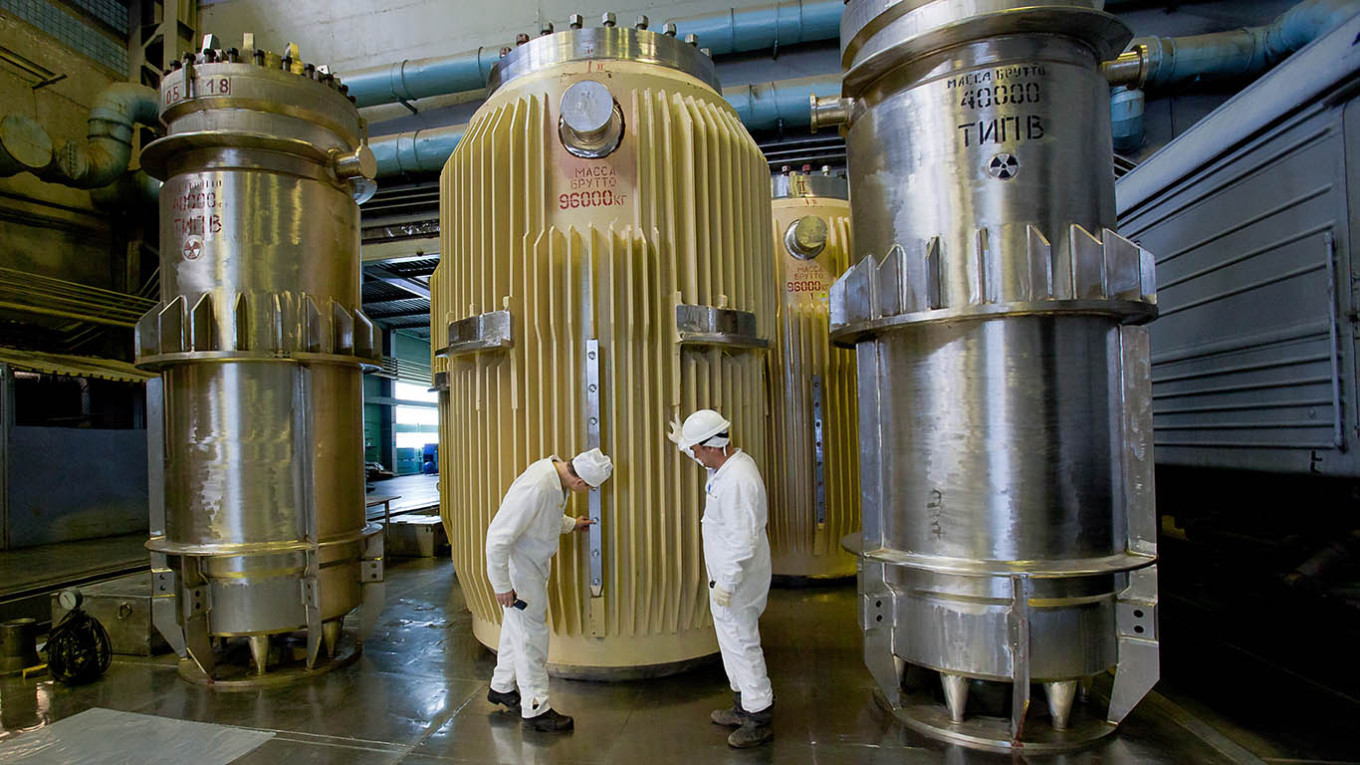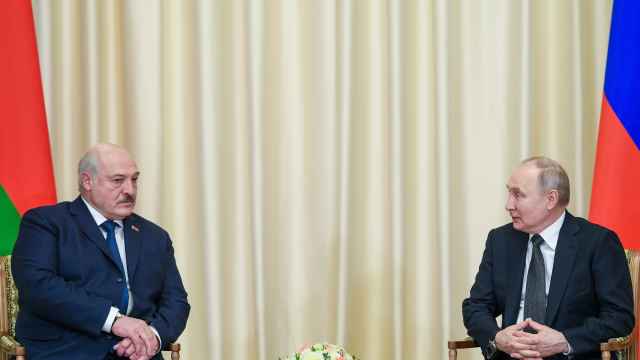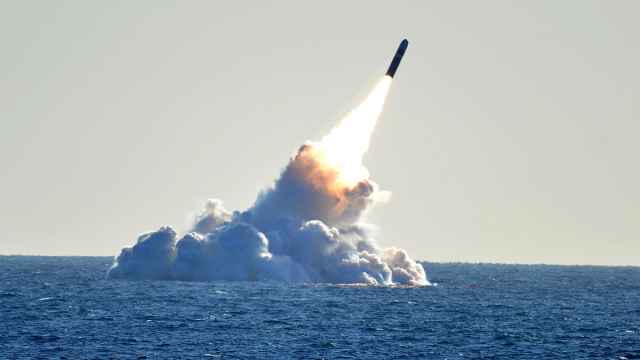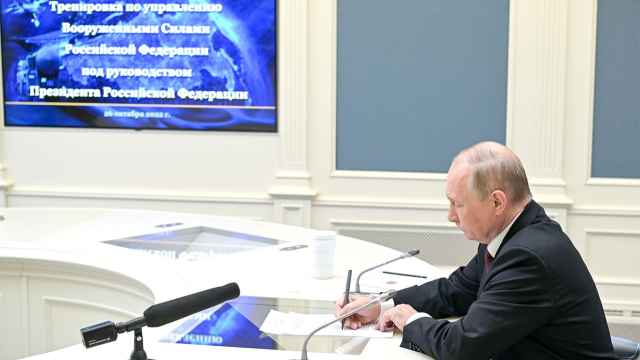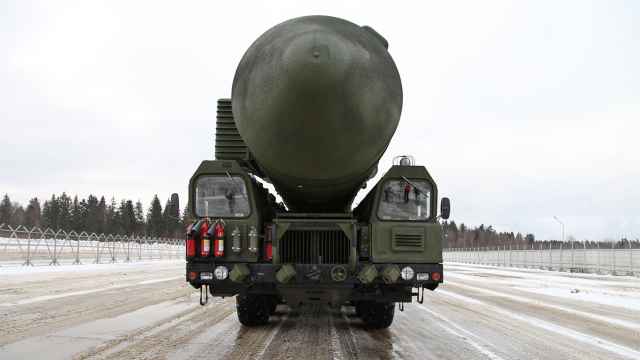The headline that Russia has formally withdrawn from a plutonium disposal agreement with the United States sounds very serious, but it doesn’t tell the whole story.
Once upon a time, in the 1990s, Russia and the U.S. agreed to reduce their nuclear arsenals by dismantling warheads in a gesture of mutual goodwill and responsible cooperation.
By that point, both countries had stockpiled enough nuclear weapons to destroy the world several times over. This partial disarmament wouldn’t have affected their defense capabilities, but it sounded great politically, especially in the U.S. The idea of cutting down stockpiles of weapons of mass destruction after the long Cold War was extremely popular.
Then came the question: What to do with the fissile materials from those warheads?
The solution for uranium was straightforward: dilute the weapons-grade uranium (highly enriched uranium, or HEU) into low-enriched uranium (LEU) and sell it to the U.S. as fuel for nuclear power plants. That became the famous Megatons to Megawatts program.
But when it came to plutonium, negotiations were trickier.
The Americans proposed mixing plutonium with glass — vitrification — which would make it nearly impossible to extract again. From their point of view, that ensured the plutonium could never be reused in weapons, effectively turning it into highly radioactive waste.
Russia, however, insisted that plutonium should also be repurposed as a component of nuclear fuel for power plants.
At the time, Russia had just one fast breeder reactor capable of running on uranium-plutonium fuel. More importantly, this approach did not guarantee the most critical thing — that the plutonium could never be reused. After all, plutonium can be separated again from uranium-plutonium fuel — and a fast-neutron reactor can both “burn” weapons-grade plutonium and produce new plutonium.
The Americans would have no way to control this process.
Russia’s state atomic agency, then called Minatom (Atomic Energy Ministry), was adamant about using plutonium fuel.
The two sides eventually agreed on a symmetrical approach: if Russia put its plutonium into reactors, the U.S. would do the same.
Naturally, the Russians understood perfectly well that the Americans needed quick results before their elections.
So the U.S. — in the spirit of “mutual goodwill and cooperation” — backed down from its original position and accepted Russia’s proposal.
The problem was that the U.S. had no fast reactors at all. They would have to develop an entirely new technology for burning plutonium fuel in reactors designed for conventional uranium fuel. But anything was worth it for a triumphant headline about getting Russia to disarm.
Then things got even more interesting. Minatom told its overseas partners: “Of course we’re eager to dispose of plutonium — we just don’t have the money. So, why don’t you give it to us?”
The U.S., in turn, went to the G7 and asked the world’s leading economies to chip in for Russia’s “plutonium poverty.”
On paper, it sounded like a win-win. But the G7’s enthusiasm was lukewarm, and the necessary funds were never raised. Too many people asked the obvious question: Why should we pour billions into something that doesn’t really qualify as plutonium disposal?
Implementation of the agreement stalled — both in Russia, where nothing was happening, and in the U.S., where officials, seeing that Russia wasn’t moving forward, lost interest too.
In the end, no one ever started burning weapons-grade plutonium in reactors. The idea was dead on arrival — except for those in Minatom dreaming of a nationwide network of fast reactors running on uranium-plutonium fuel, paid for by the Americans.
And maybe that was for the best. Plutonium is the most toxic radioactive element on Earth, with a half-life of 24,000 years. Any reactor accident involving plutonium fuel would risk widesread contamination. And making a “plutonium economy” profitable is practically impossible — as Japan and France learned from their own failed experiments in the latter half of the 20th century.
All in all, the plutonium deal has long since lost any real significance. The U.S. elections it once served are a quarter-century in the past, and Russia’s nuclear industry long ago accepted that they had failed to trick the Americans into bankrolling its plutonium dreams.
So President Vladimir Putin’s latest attempt to once again con the Americans into reviving the plutonium agreement — in exchange for a rather hefty package of concessions including cuts to U.S. military infrastructure and troop numbers, lifting of sanctions, compensation for sanctions-related damages, repeal of the Magnitsky Act and so on — looks like pure absurdity mixed with wishful thinking that the Kremlin’s chief geopolitical adversary must be a complete idiot.
A Message from The Moscow Times:
Dear readers,
We are facing unprecedented challenges. Russia's Prosecutor General's Office has designated The Moscow Times as an "undesirable" organization, criminalizing our work and putting our staff at risk of prosecution. This follows our earlier unjust labeling as a "foreign agent."
These actions are direct attempts to silence independent journalism in Russia. The authorities claim our work "discredits the decisions of the Russian leadership." We see things differently: we strive to provide accurate, unbiased reporting on Russia.
We, the journalists of The Moscow Times, refuse to be silenced. But to continue our work, we need your help.
Your support, no matter how small, makes a world of difference. If you can, please support us monthly starting from just $2. It's quick to set up, and every contribution makes a significant impact.
By supporting The Moscow Times, you're defending open, independent journalism in the face of repression. Thank you for standing with us.
Remind me later.



